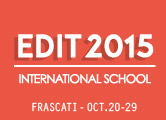Speaker
Dr
John J. Degnan
(Sigma Space Corporation)
Description
SLR currently defines the Earth Scale Factor (GM) and the origin of the International Terrestrial Reference Frame (ITRF), i.e. the Earth’s center of mass. Following the launch of the first geodetic satellites in the 1970s, SLR contributed heavily to our early modeling of the Earth’s gravity field, global tectonic plate motion, and regional crustal deformation near plate boundaries. Between VLBI sessions, SLR was also used to interpolate measurements of the Earth Orientation Parameters (EOP), which define the spin axis of the Earth and its time-dependent orientation and speed of rotation within the Celestial Reference Frame. More recently, SLR has been used to transfer time between atomic clocks, located on different continents, at the 50 picosecond level .
The Precise Orbit Determination (POD) capability of SLR has also supported a diverse array of Global Navigation Satellite Systems (GNSS), such as GPS, and international remote sensing satellites. For example, the combination of SLR with spaceborne microwave altimetry has provided spatially resolved maps of: global ocean currents and their velocities, mean sea level (MSL) rise, and even deep sea floor topography. With the advent of spaceborne laser altimeters, which derive much of their technology from the SLR program, high resolution topographic maps of the Earth, Moon, Mars, Mercury, and several asteroids have been obtained. In parallel, Lunar Laser Ranging has made important contributions to Lunar Physics, the Solar System Reference Frame, and General Relativity/Fundamental Physics.
Primary author
Dr
John J. Degnan
(Sigma Space Corporation)

